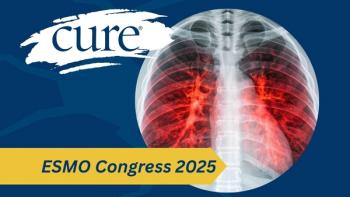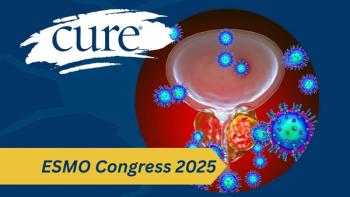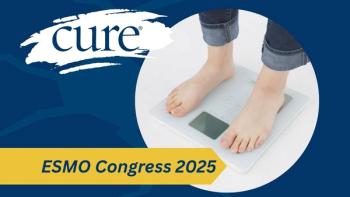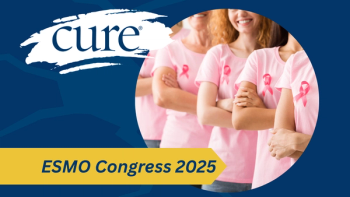
Effectiveness of Opdivo Persists Long-Term in Advanced Renal Cell Carcinoma
In the longest follow-up of an anti-PD-1 immunotherapy in RCC, about one-third of the patients treated with single-agent Opdivo are still alive four and five years later.
About one-third of patients with advanced renal cell carcinoma (aRCC) who were treated with single-agent Opdivo (nivolumab) in the second-line setting or later were still alive at four and five years in long-term follow-up data from phase 1 and phase 2 clinical trials. The analysis, the longest follow-up with an anti-PD-1 immunotherapy to date in the treatment of RCC, was presented during the 2016 Annual Meeting of the American Society of Clinical Oncologists (ASCO), a gathering of 30,000 oncology professionals in Chicago.
In the phase 1 study, the five-year overall survival (OS) rate was 34 percent. In the phase 2 study, 29 percent of patients remained alive at four years. Moreover, subgroup analyses showed that responses were consistent across patients with different characteristics, and follow-up data from the pivotal phase 3 CheckMate-025 study, which led to FDA approval, demonstrated improvements in health-related quality of life with Opdivo versus Afinitor (everolimus).
“Long-term survival [with Opdivo treatment] is achievable regardless of risk group, performance status or best overall response,” said David McDermott, director of the Biologic Therapy Program at Beth Israel Deaconess Medical Center, in Boston.
Opdivo targets PD-1, a protein on cancer cells that ordinarily keeps immune response under control; the treatment allows the immune system to ramp up and more effectively fight cancer cells. Afinitor is a targeted drug that works in two ways: by blocking the protein kinase mTOR and thus inhibiting messages that cause cancer cells to grow, and also by halting the formation of blood vessels (angiogenesis) to tumors.
In the CheckMate-025 study, OS was significantly superior with Opdivo than with Afinitor in patients with aRCC who had received prior anti-angiogenic therapy, with a minimum follow-up of 14 months (25 vs 19.6 months). This study led to the approval of Opdivo in the United States and Europe for the treatment of patients with aRCC following prior therapy.
The open-label phase 1 study enrolled 34 patients with ECOG performance status equal to or less than 2 who had received one to five prior systemic treatment regimens; these patients were treated with Opdivo, at doses of either 1 or 10 mg/kg, every two weeks for a maximum of 96 weeks. The phase 2 study included 168 patients with Karnofsky performance status at least 70 percent who had received one to three prior treatment regimens in the metastatic setting; they were treated with Opdivo at doses of 0.3, 2 or 10 mg/kg every three weeks continuously until disease progression. ECOG and Karnofsky performance scores indicate how disabled patients are by their disease.
“The median OS was greater than 22 months for patients on both the phase 1 and phase 2 trials,” said McDermott. “With follow-up now over 48 months, approximately one-third of patients are alive at four years on both the phase 1 and phase 2 studies, and 34 percent of patients are alive at five years on the phase 1 trial. We look forward to examining whether Opdivo produces similar long-term survival in the phase 3 trial.”
Long-term OS was explored by baseline and response characteristics. In the phase 2 trial, encouraging long-term survival outcomes were observed in both the favorable-risk and unfavorable-risk subgroups, including good-, intermediate- and poor-risk patients according to Memorial Sloan Kettering Cancer Center (MSKCC) risk criteria.
Long-term survival was also seen in patients with either excellent or reduced Karnofsky performance status (median OS: 27.2 months and 14.6 months, respectively) in the phase 2 trial.
“In patients with objective response, stable disease or progressive disease as their best response, these data suggest that long-term survival is achievable in all subgroups,” he said. Median OS was not reached in patients with complete or partial response. Median OS was 22.9 months in those with stable disease, and was nine months in those with progressive disease.
Of the 48 patients in the phase 2 trial who were alive at four years, 15 required no subsequent therapy. “Interestingly, stable disease and progressive disease was the best response for more than 50 percent of the patients who achieved long-term survival in this trial,” said McDermott.
An OS advantage to Opdivo over Afinitor was also apparent in the phase 3 trial in all risk groups, including traditionally unfavorable risk groups, such as MSKCC poor-risk patients, those with reduced Karnofsky performance status and patients whose best response was progressive disease, he noted. “It will be interesting to see if these survival benefits are maintained with longer follow-up,” he said.
Long-term safety of Opdivo was also assessed. With more than four years of follow-up, grade 3 (serious) toxicity occurred in less than 20 percent of Opdivo-treated patients, and treatment-related adverse events leading to discontinuation of therapy were observed in less than 10 percent. “These results are notable because they remain similar to the safety outcomes in the larger phase 3 study, even with an additional three years of follow-up,” he said.
Most side effects in the phase 1 and 2 trials were reversible. The highest percentage of adverse events in patients at risk occurred within the first six months of treatment; no endocrine, gastrointestinal, hepatic, pulmonary, renal or skin adverse events occurred after 30 months of starting Opdivo, and similar trends were seen in the emergence of all reported treatment-related adverse events.
While most side effects were well-managed with immune-modulating therapy, “not all side effects resolved completely,” said McDermott. For example, while all serious or severe endocrine toxicities resolved with treatment, half of the patients with more mild toxicity required ongoing hormonal replacement therapy.
In the phase 2 trial, the median time to response was 2.8 months and the median duration of response was 23.0 months.





